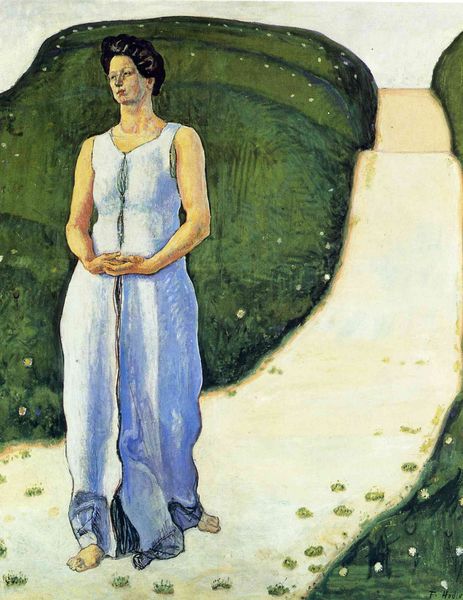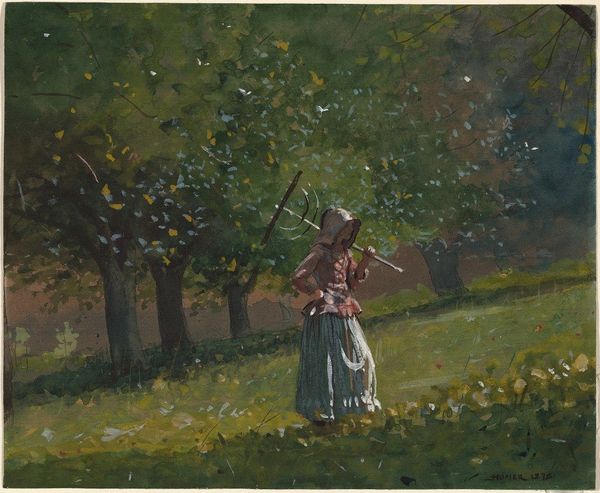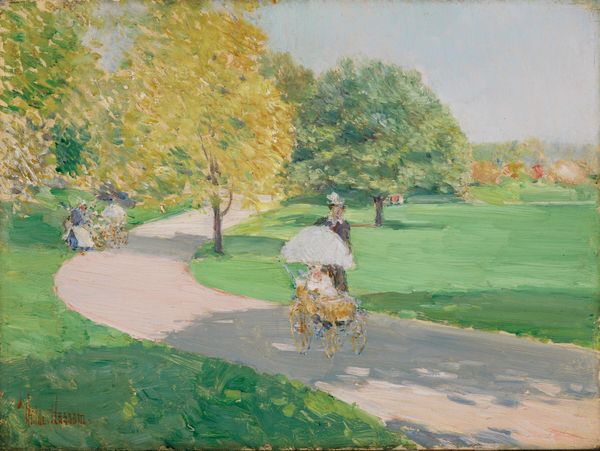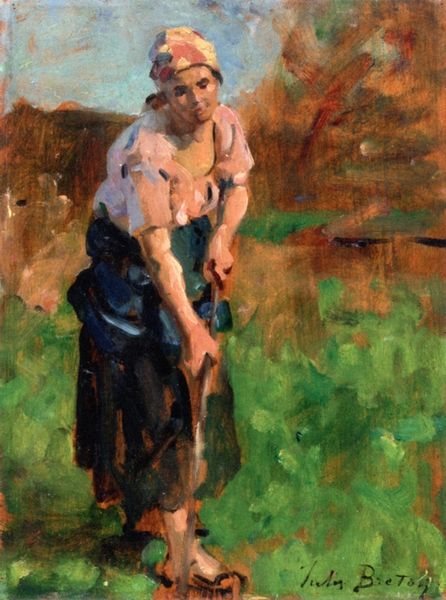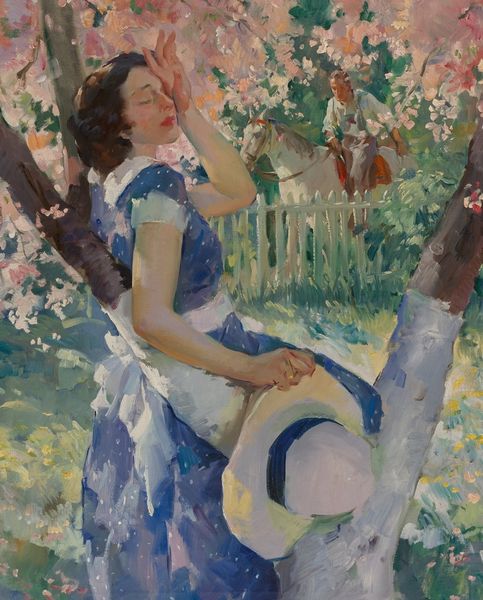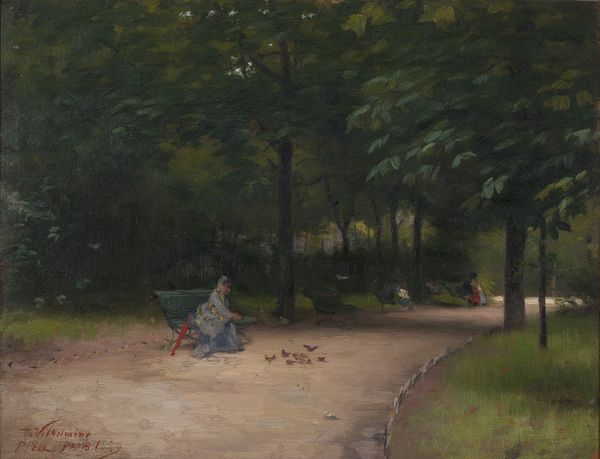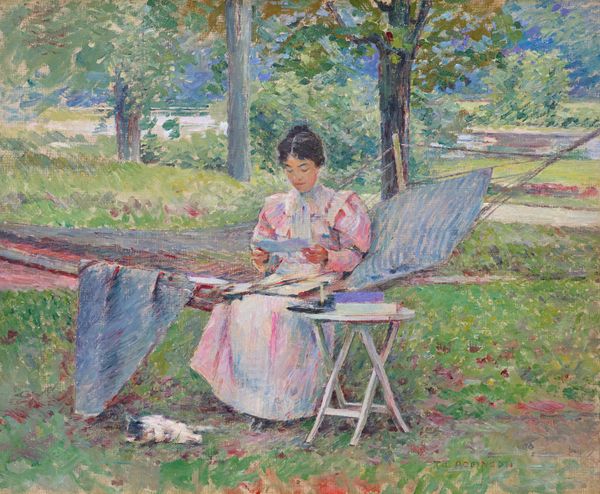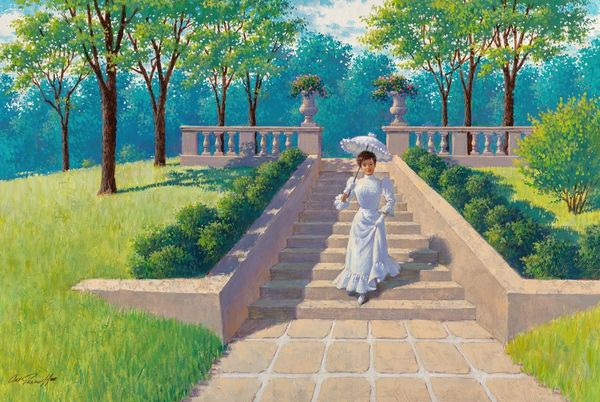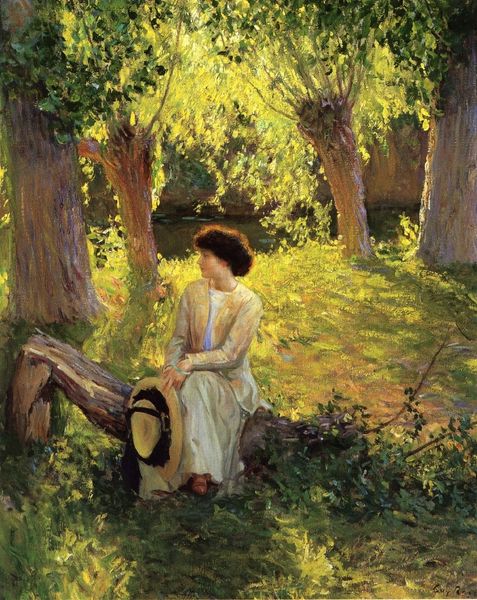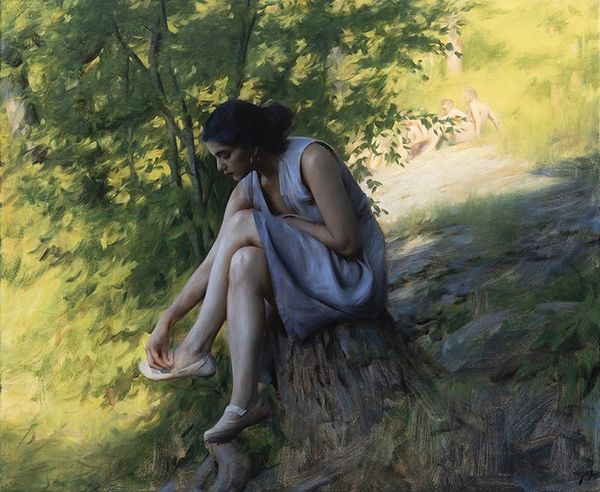
painting, plein-air, oil-paint
#
portrait
#
painting
#
plein-air
#
oil-paint
#
landscape
#
oil painting
#
romanticism
#
symbolism
Copyright: Public domain
Curator: Here we have a landscape titled “Lutoslawice,” a plein-air painting rendered with oils, by Jacek Malczewski. Editor: Oh, this gives me such a nostalgic pang! It’s so serene, a woman caught in contemplation in a garden that’s all sunlight and hazy greens. You can almost feel the lazy hum of insects in the air, the scent of grass. Curator: Absolutely. Malczewski, working around the turn of the century, was deeply embedded in the Symbolist movement and Romanticism. In “Lutoslawice,” it’s like he’s positioning his subject, within the complex web of land ownership, gender, and class dynamics prevalent at the time. The woman, her dress, and the landscape, they all coalesce into a very nuanced portrait. Editor: It is beautiful how the fabric of her dress is almost melting into the surrounding greens, or maybe the sunlight softens the details? A very evocative touch. I feel invited to weave my own story of quiet moments, you know? Maybe the woman has come here to process something or to reflect upon a recent memory? It feels heavy but tranquil, both. Curator: Right. These paintings weren’t simply about aesthetic beauty. They were invested with commentary, a form of quiet rebellion if you may, hinting at complex identities amid changing social structures. How the role of women was being actively negotiated during those periods. Even the style is hinting that. Editor: Yes, a subtle unease too, definitely. Not just a picture, more like a glimpse into someone's psyche at the very place where it is taking its breath again. The fact that she is gazing afar feels very significant in that regard. Curator: Indeed, it’s this dance between visibility and representation that I find so engaging in his work. What seems like an idyll on the surface carries significant critical weight. Editor: I could lose myself in here, wandering those quiet corners with that wistful soul for hours... what a gift from the painter’s heart. Curator: His art invites us to consider whose stories have been historically valued. Who is being seen, and from what angle? I think "Lutoslawice" continues to resonate precisely because of this tension.
Comments
No comments
Be the first to comment and join the conversation on the ultimate creative platform.
